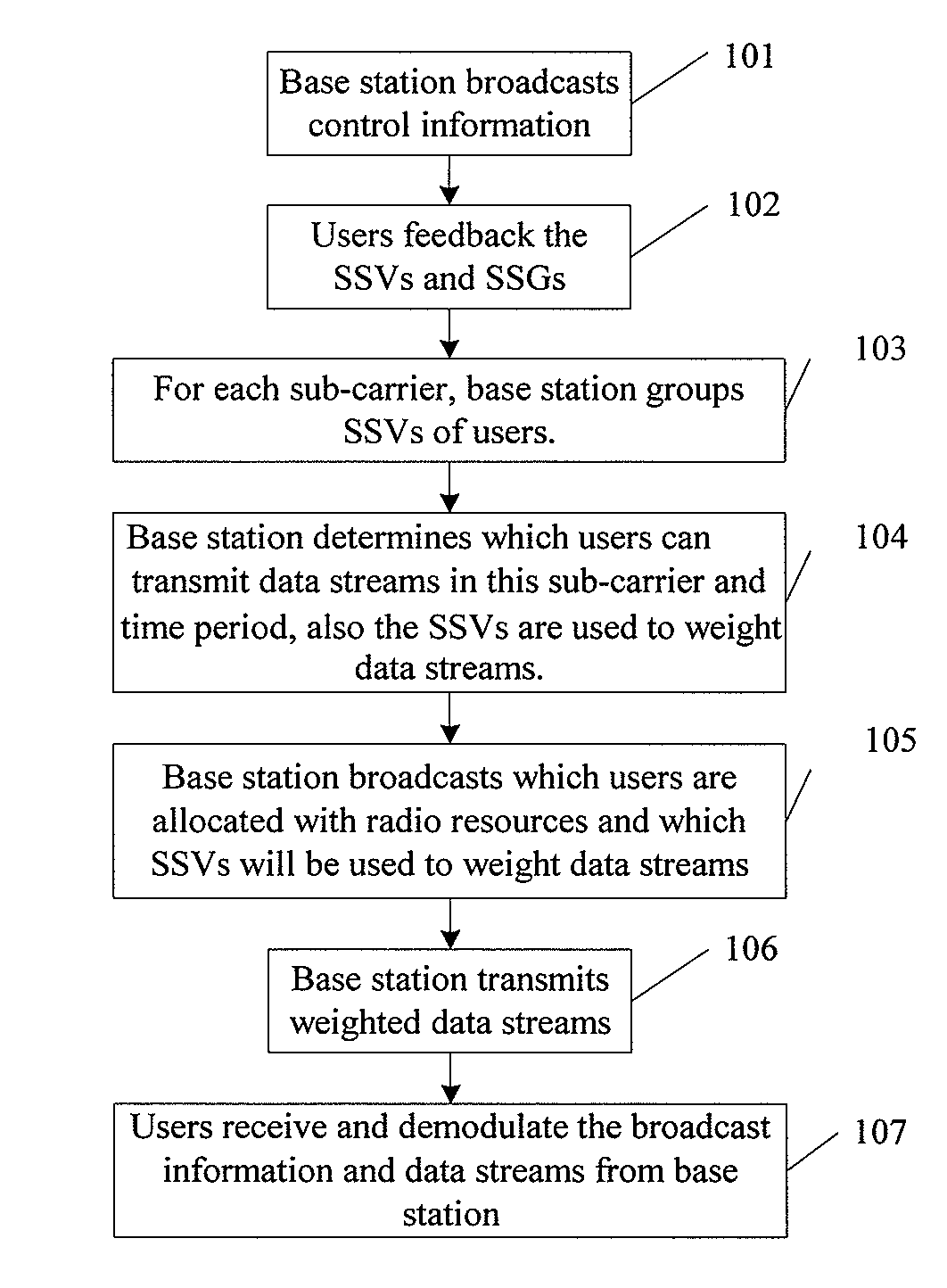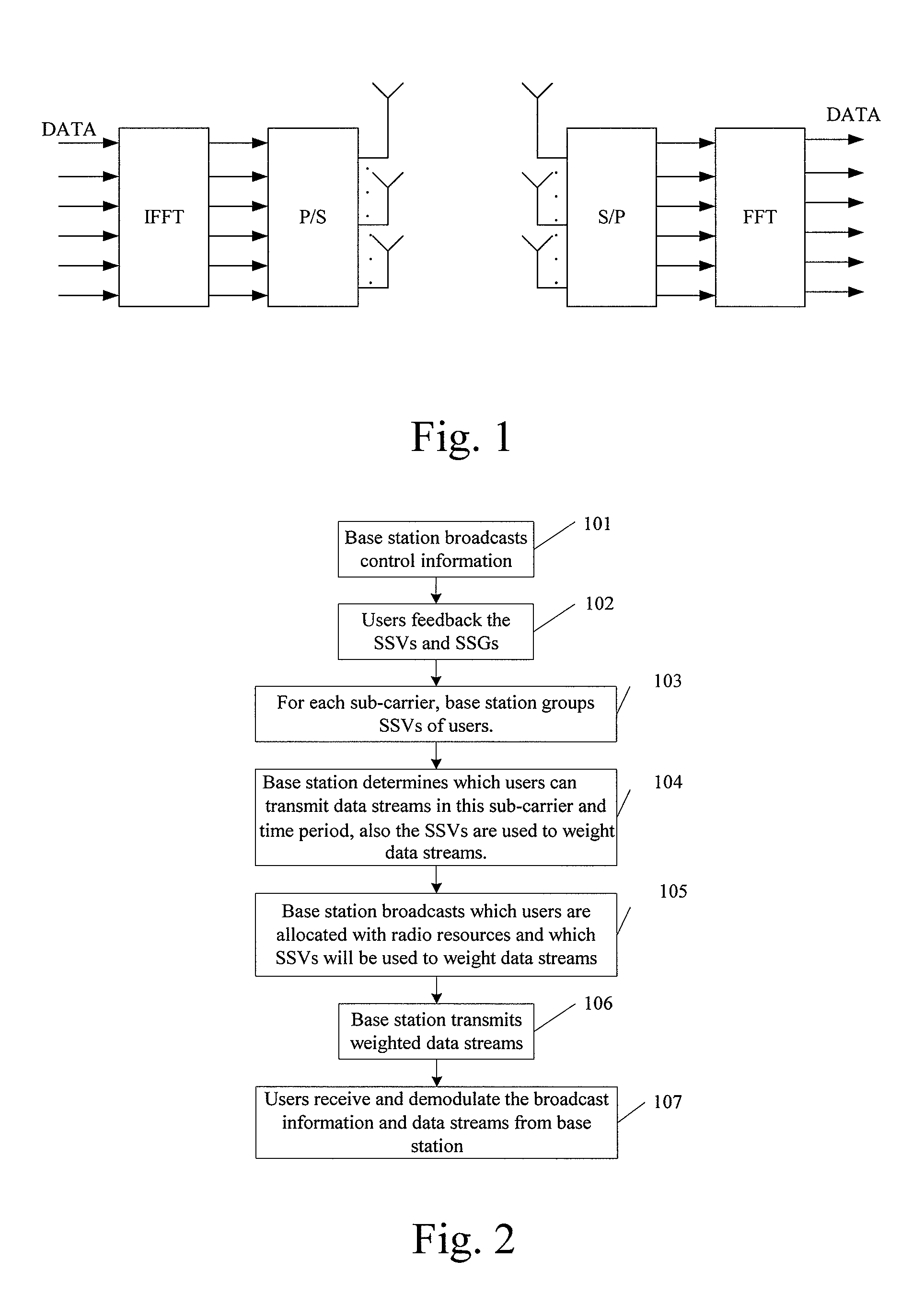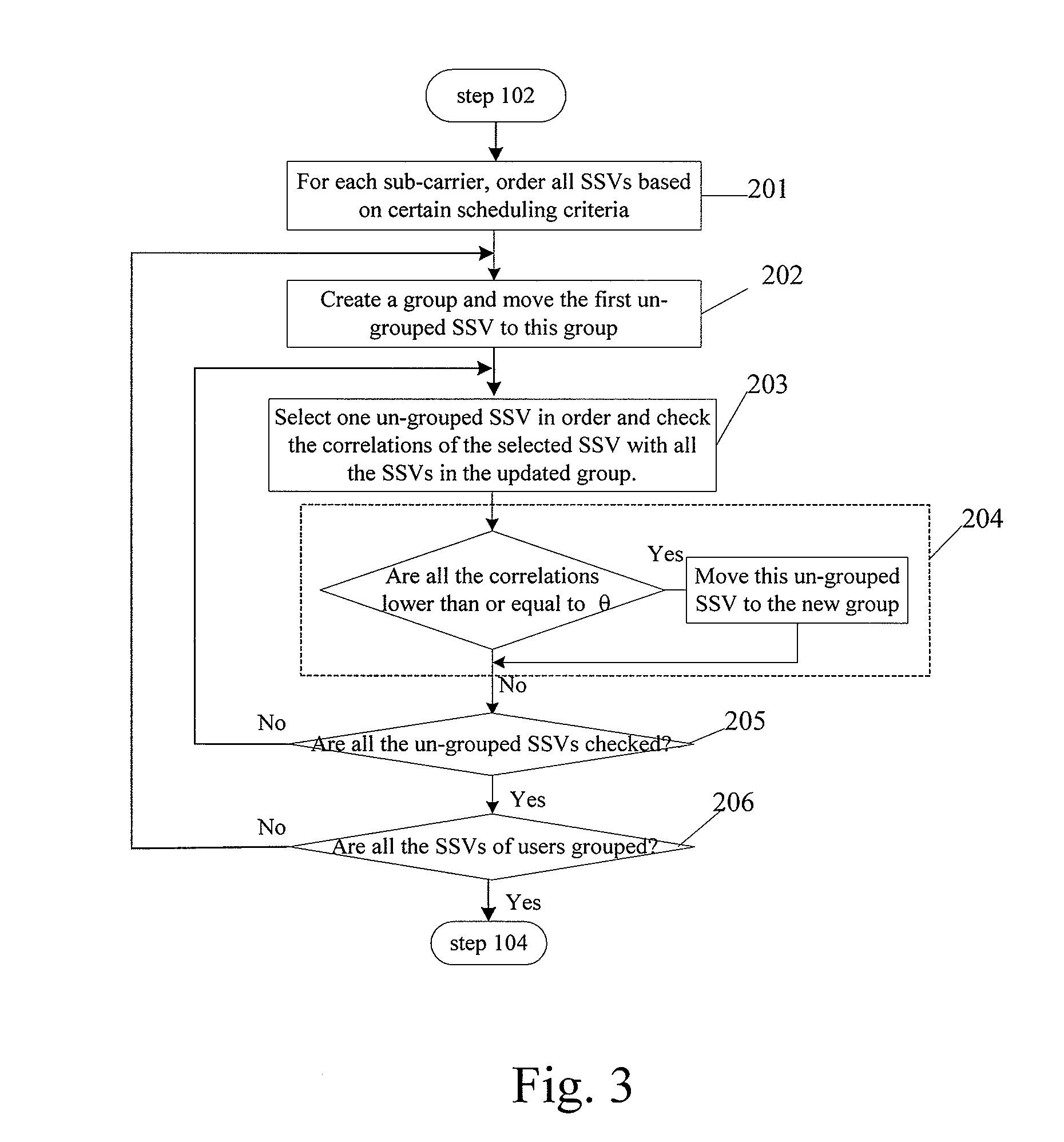Resource allocation method for mimo-ofdm of multi-user access systems
a multi-user access system and resource allocation technology, applied in the direction of digital transmission, transmission path sub-channel allocation, diversity/multi-antenna system, etc., can solve the problems of co-channel interference (cci), task can be overwhelming, transmission to these users mutually interferes with each other, etc., to reduce complexity
- Summary
- Abstract
- Description
- Claims
- Application Information
AI Technical Summary
Benefits of technology
Problems solved by technology
Method used
Image
Examples
Embodiment Construction
[0042]The present invention is described in detail in conjunction with the accompanying drawings. A resource allocation for downlink from the base station to users is taken as an embodiment.
[0043]The SSVs and the spatial sub-channel gains, SSGs, for each OFDM time-frequency resource from the multiple users are received by a base station. In the base station, these SSVs are grouped in several groups where the SSVs within a group have high spatial correlation and SSVs from different groups have low spatial correlation, or the SSVs within a group have low spatial correlation and SSVs from different groups have high spatial correlation. The groups are defined by specifying a spatial correlation threshold parameter.
[0044]Based on the first grouping rule where the SSVs within a group have high spatial correlation and SSVs from different groups have low spatial correlation, the base station selects one SSV and corresponding user from each group according to a scheduling rule. Data streams ...
PUM
 Login to View More
Login to View More Abstract
Description
Claims
Application Information
 Login to View More
Login to View More - R&D
- Intellectual Property
- Life Sciences
- Materials
- Tech Scout
- Unparalleled Data Quality
- Higher Quality Content
- 60% Fewer Hallucinations
Browse by: Latest US Patents, China's latest patents, Technical Efficacy Thesaurus, Application Domain, Technology Topic, Popular Technical Reports.
© 2025 PatSnap. All rights reserved.Legal|Privacy policy|Modern Slavery Act Transparency Statement|Sitemap|About US| Contact US: help@patsnap.com



